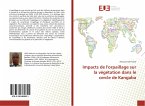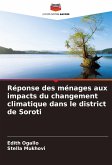Document de l¿année 2023 dans le domaine Sciences de la Terre / Géographie - Géographie physique, Géomorphologie, Ecologie, note: -, , langue: Français, résumé: This study focuses on the impact of the adoption of agricultural technologies on the poverty of rural households in Mali. Data collection was based on a data set that covers 2,240 households, including 1,120 technology beneficiary households and 1,120 non-beneficiaries. An econometric logistic regression analysis was used to determine the determinants and marginal effects of the adoption of improved agricultural technologies. These results show that adoption is motivated by access to credit, access to extension workers, members of the organization, migration, total area exploited and area owned by the household. In particular, marginal effects are likely to increase with access to credit, access to extension worker, being a member of the organization, total area owned by the household and decreases with the total area exploited and migration. The endogenously switched regression model predicts the effects of adoption on household poverty indicators. These results relate to adoption increasing household income by 543,449 F more than those of non-adopters. Moreover, this effect of the agricultural technology seems more advantageous among nonadopters if they decide to adopt the technology than the real adopters. By count, households that adopt improved agricultural technologies spend respectively more than 294,669 F and 42,147 F on food and non-food consumption per capita than those who do not adopt. This suggests that access to technologies can improve the welfare of rural households. Indeed, the adoption of the technology reduced the poverty rate of adopters to 4% against 22% of non-adopters. Interventions should span across various determinants of improved technology adoption to facilitate multi-stakeholder innovation platforms.
Hinweis: Dieser Artikel kann nur an eine deutsche Lieferadresse ausgeliefert werden.
Hinweis: Dieser Artikel kann nur an eine deutsche Lieferadresse ausgeliefert werden.








